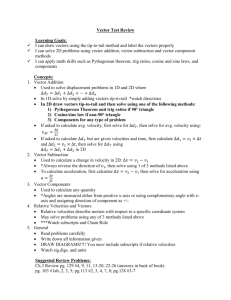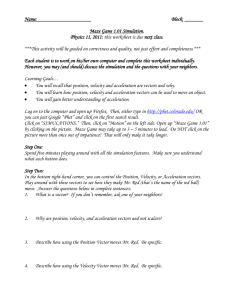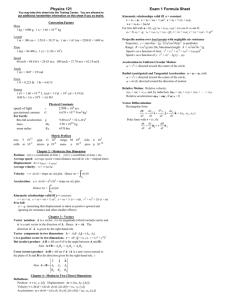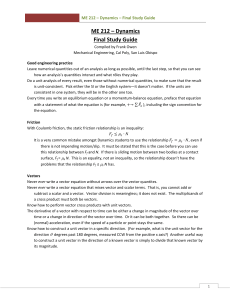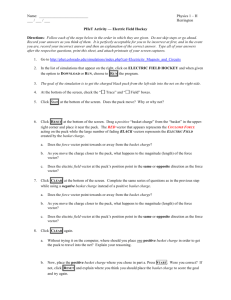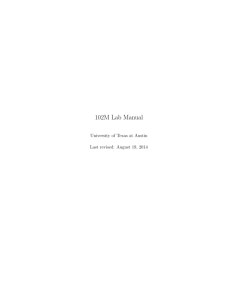Vector Analysis of Uniform Circular Motion
advertisement
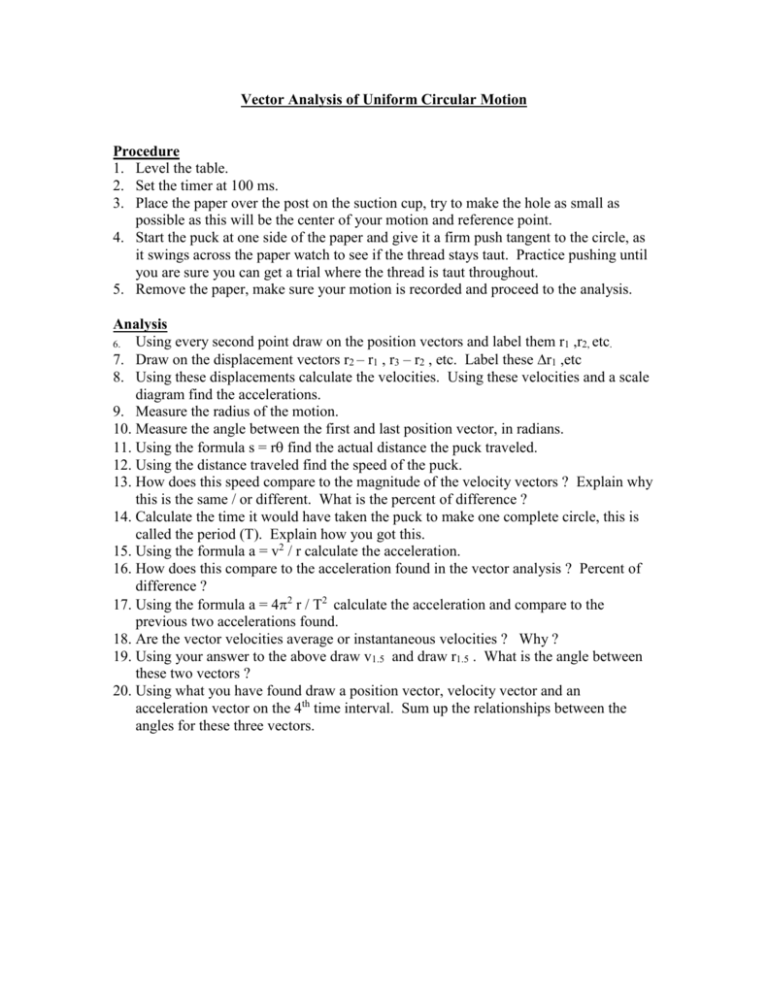
Vector Analysis of Uniform Circular Motion Procedure 1. Level the table. 2. Set the timer at 100 ms. 3. Place the paper over the post on the suction cup, try to make the hole as small as possible as this will be the center of your motion and reference point. 4. Start the puck at one side of the paper and give it a firm push tangent to the circle, as it swings across the paper watch to see if the thread stays taut. Practice pushing until you are sure you can get a trial where the thread is taut throughout. 5. Remove the paper, make sure your motion is recorded and proceed to the analysis. Analysis 6. Using every second point draw on the position vectors and label them r1 ,r2, etc. 7. Draw on the displacement vectors r2 – r1 , r3 – r2 , etc. Label these r1 ,etc 8. Using these displacements calculate the velocities. Using these velocities and a scale diagram find the accelerations. 9. Measure the radius of the motion. 10. Measure the angle between the first and last position vector, in radians. 11. Using the formula s = r find the actual distance the puck traveled. 12. Using the distance traveled find the speed of the puck. 13. How does this speed compare to the magnitude of the velocity vectors ? Explain why this is the same / or different. What is the percent of difference ? 14. Calculate the time it would have taken the puck to make one complete circle, this is called the period (T). Explain how you got this. 15. Using the formula a = v2 / r calculate the acceleration. 16. How does this compare to the acceleration found in the vector analysis ? Percent of difference ? 17. Using the formula a = 42 r / T2 calculate the acceleration and compare to the previous two accelerations found. 18. Are the vector velocities average or instantaneous velocities ? Why ? 19. Using your answer to the above draw v1.5 and draw r1.5 . What is the angle between these two vectors ? 20. Using what you have found draw a position vector, velocity vector and an acceleration vector on the 4th time interval. Sum up the relationships between the angles for these three vectors.
